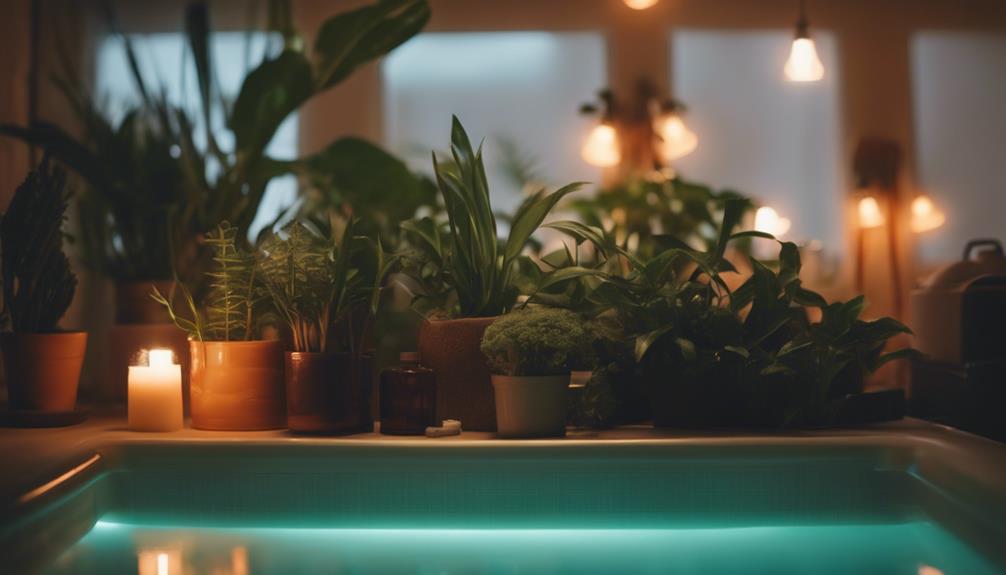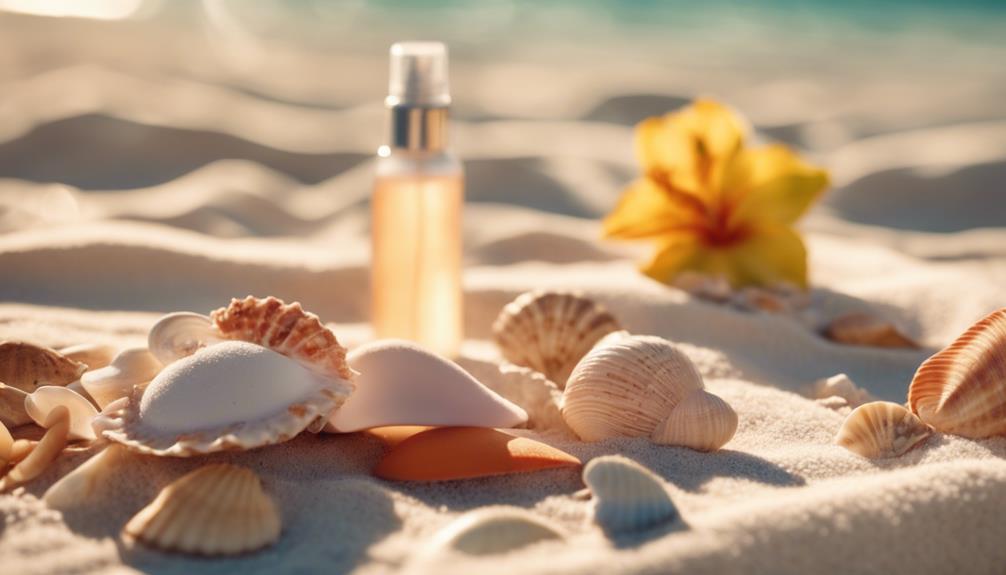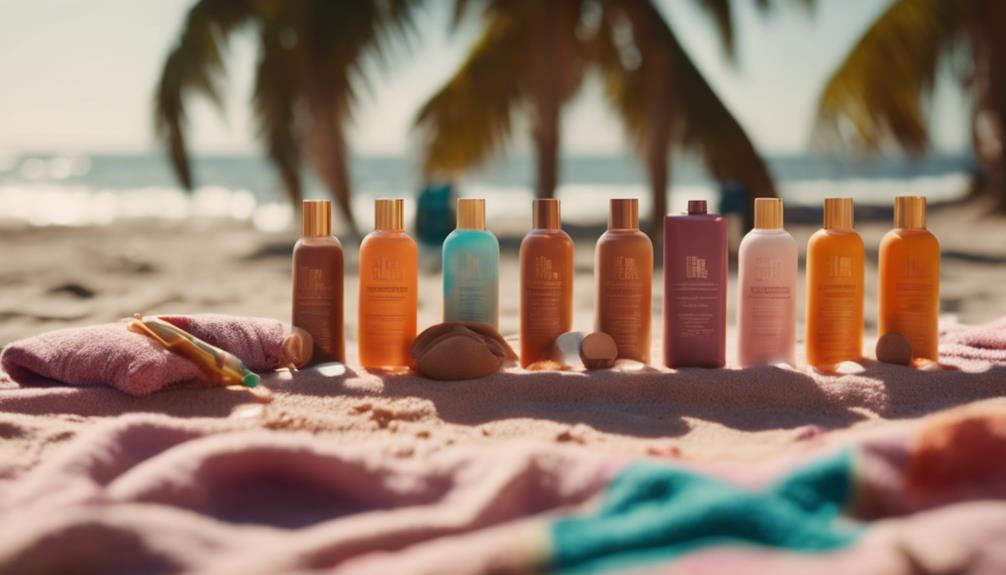To master the art of home sun tanning, first apply a broad-spectrum sunscreen with SPF 15-30 to protect your skin from harmful UV rays. Aim to tan outside during off-peak hours, usually before 10 a.m. or after 4 p.m., and change positions frequently for an even glow. Don't forget to hydrate; drink plenty of water and use moisturizing lotions to keep your skin supple. If you want a quick fix, consider indoor tanning options like self-tanners or bronzers. By following these key tips, you can achieve a sun-kissed look while minimizing risks. Discover more essential techniques next!
Key Takeaways
- Apply sunscreen with SPF 15-30 before sun exposure to protect your skin from harmful UV rays.
- Shift positions frequently while tanning to ensure an even tan and prevent burns.
- Stay hydrated by drinking water regularly and using moisturizing lotions post-tan for healthy skin.
- Use reflective surfaces like water or shiny sand to enhance your tanning results.
Importance of Sun Protection
Protecting your skin from harmful UV rays is essential to reducing your risk of skin cancer and maintaining its health.
Always apply sunscreen with SPF 15-30 before heading outdoors, ensuring complete coverage on all exposed areas. Remember to reapply every two hours, especially if you're sweating or swimming. It's vital to use enough sunscreen—about an ounce for your entire body, so don't skimp!
Try to avoid tanning during peak UV hours between 10 a.m. and 4 p.m. After sun exposure, soothe and hydrate your skin with aloe-based moisturizers to prevent dryness.
Effective Tanning Techniques

To achieve a beautiful, even tan, it's important to soak up direct sunlight while diligently applying SPF 15-30 sunscreen for protection.
Shift your position frequently to avoid uneven patches and guarantee all areas get equal exposure.
Seek out locations with reflective surfaces like water or shiny sand, which can enhance your tanning experience.
Consider using aluminum foil or mirrors to target hard-to-tan spots effectively.
Remember to monitor your tanning time, aiming for shorter sessions to prevent burns.
Taking breaks in the shade can help your skin recover while still enjoying the sun.
By practicing these techniques, you can enjoy a radiant tan while prioritizing skin safety and health.
Happy tanning!
Hydration for Healthy Skin

Staying hydrated is essential for maintaining healthy skin, especially during sun exposure. Drinking plenty of water not only keeps your skin supple but also helps prevent dryness and flakiness after tanning. Incorporate moisturizing lotions and natural oils into your routine to lock in moisture.
Here's a quick reference table to guide your hydration efforts:
| Hydration Tip | Benefits |
|---|---|
| Drink water regularly | Keeps skin hydrated |
| Use moisturizing lotion | Prevents dryness post-tan |
| Apply natural oils | Enhances moisture retention |
| Eat water-rich foods | Supports overall skin health |
Tips for Optimal Tanning Results

Maintaining hydration not only supports your skin's health but also enhances your tanning experience, ensuring you achieve ideal results.
To maximize your tan, apply sunscreen with SPF 15-30 before heading outside, and reapply every two hours. Shift your position regularly to avoid uneven tanning and consider using reflectors like aluminum foil to catch those hard-to-tan areas.
Incorporate natural oils, such as coconut oil, to nourish your skin while you tan, and look for foods rich in beta carotene to help maintain that sun-kissed glow.
Indoor Tanning Options

Exploring indoor tanning options can provide a controlled environment for achieving your desired glow without the unpredictability of outdoor sun exposure.
Tanning beds are a popular choice, offering regulated UV exposure. Just make certain to wear protective goggles to shield your eyes.
Alternatively, consider spray tans or self-tanning lotions for a more immediate and customizable result. These products allow you to build color gradually and avoid the risks associated with UV exposure.
When using tanning beds, prepare your skin properly and clean the equipment before use to guarantee safety.
Always choose products that match your skin type to avoid streaks or uneven tones.
With the right approach, indoor tanning can help you achieve a beautiful, sun-kissed appearance.
Post-Tanning Skin Care
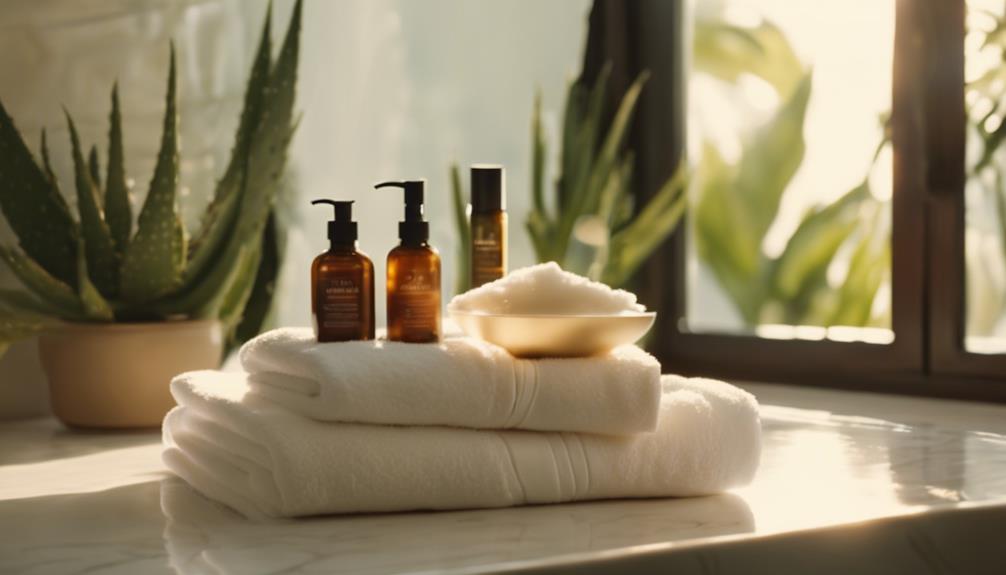
After tanning, it's important to nourish your skin to keep it hydrated and prevent dryness. Use a high-quality moisturizer to lock in moisture and soothe any irritation. Consider incorporating natural oils, like coconut or almond oil, which provide extra hydration and nourishment. Drinking water is also vital to help your skin recover and maintain elasticity.
Here's a quick reference table for post-tanning skin care:
| Skin Care Step | Recommended Product | Frequency |
|---|---|---|
| Moisturize | Aloe-based lotion | After tanning |
| Hydrate | Water | Throughout the day |
| Apply natural oils | Coconut or almond oil | As needed |
| Exfoliate (lightly) | Gentle scrub | 2-3 times a week |
Common Tanning Mistakes to Avoid
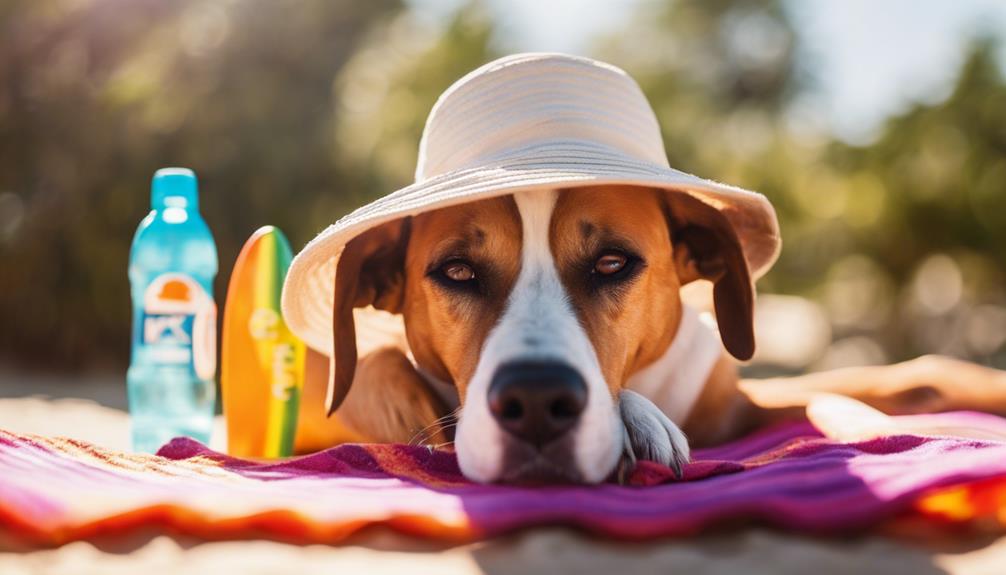
Even with a solid post-tanning skin care routine, it's easy to make mistakes that can hinder your tanning results or harm your skin.
One common error is neglecting sunscreen; always apply an SPF of 15-30, even while tanning.
Over-tanning is another pitfall; keep an eye on your time in the sun and set timers to prevent burns.
Skipping hydration is a mistake too—drink plenty of water and use moisturizing lotions to keep your skin healthy.
Don't forget to rotate positions regularly for an even tan, and avoid tanning during peak hours to minimize damage.
Frequently Asked Questions
How Long Should I Tan Each Session for Best Results?
For best results, you should tan for 15 to 30 minutes per session, depending on your skin type. Always monitor your skin's response, and adjust the time to avoid burns or overexposure.
Can I Tan on Cloudy Days?
Yes, you can tan on cloudy days, as up to 80% of UV rays can penetrate clouds. Just remember to apply sunscreen, reapply regularly, and keep track of your tanning time to avoid overexposure.
What Clothing Is Best to Wear While Tanning?
Think of your skin as a canvas; wearing light, breathable fabrics like cotton or linen helps it absorb sunlight evenly. Avoid tight clothing that can leave marks, and opt for swimwear or loose attire for ideal tanning.
How Do I Know My Skin Type for Tanning?
To know your skin type for tanning, observe how your skin reacts to sun exposure. If you burn easily, you've got fair skin. If you tan easily, you likely have medium to dark skin.
Are There Any Foods That Help Enhance My Tan?
Imagine munching on carrots like a rabbit; they're packed with beta carotene, which can enhance your tan. Sweet potatoes and leafy greens work wonders too, helping maintain that sun-kissed glow while keeping your skin healthy.
Conclusion
Now that you're equipped with the essentials of home sun tanning, it's time to step into the sun like a sun-kissed goddess.
Remember, protecting your skin is just as important as achieving that golden glow. Keep hydrated, apply that sunscreen, and don't forget to rotate like a well-oiled sundial for an even tan.
With these tips, you can bask in the warmth and emerge radiant, ready to turn heads with your stunning, healthy glow!


